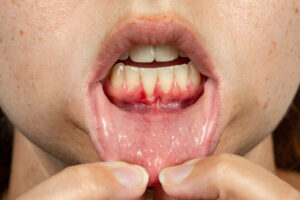What Can Be Mistaken for Trigeminal Neuralgia

Trigeminal neuralgia, often described as one of the most severe pains known to medical practice, can sometimes hide among symptoms of other conditions.
As a dental expert, I’ve observed firsthand how this nerve disorder, characterized by intense, stabbing facial pain, can be easily confused with a variety of other issues.
The trigeminal nerve, responsible for sensation in the face and motor functions such as biting and chewing, can mimic or be mimicked by conditions ranging from dental problems to temporomandibular joint (TMJ) disorders and even sinus infections.
Key Takeaways
- Trigeminal neuralgia is easily misdiagnosed. Conditions like dental problems, sinusitis, TMJ disorders, and various headaches can all produce facial pain similar to trigeminal neuralgia (TN).
- Red flags can help distinguish TN. Look for classic TN symptoms (brief electric-shock pains), older age of onset, and unilateral pain. Atypical features might warrant further investigation.
- TN can be a symptom, not just a disease. Multiple sclerosis, tumors, and other conditions can cause nerve pain that mimics true TN.
- MRI is useful, but not a cure-all. While MRIs won’t show TN itself, they can reveal other problems that might be causing the pain.
- Treatment exists for TN and its mimics. Accurate diagnosis is vital, as treatments for TN differ from those of dental issues, migraines, etc.
Table of Contents
What other diseases mimic trigeminal neuralgia?
Dental Problems
Dental issues like tooth decay, abscesses, and gum diseases can lead to severe facial pain. These conditions cause discomfort due to infection or inflammation of the tooth’s nerve and surrounding tissues.
Unlike trigeminal neuralgia, which is characterized by brief, electric shock-like pains, dental pain is often constant and may worsen with chewing or hot or cold exposure. Treatment involves addressing the underlying dental issue.
Temporomandibular Joint Disorders (TMJ)
TMJ disorders affect the jaw joint and muscles controlling jaw movement, causing pain that can resemble trigeminal neuralgia.
Symptoms include jaw pain, difficulty opening the mouth, and a clicking sound when moving the jaw. Treatment options include physical therapy, dental splints, and pain relievers.
Postherpetic Neuralgia
This condition follows a shingles outbreak, resulting in chronic nerve pain in the affected area. It can mimic trigeminal neuralgia when it involves facial nerves. The pain is typically burning or stabbing and persists long after the rash has healed. Treatments include medications to manage pain and nerve health.
Cluster Headaches and Migraines
These severe headaches can occasionally cause facial pain similar to trigeminal neuralgia. Cluster headaches are intense, occur around one eye, and may be accompanied by eye-watering and nasal congestion.
Migraines may also involve facial pain, along with sensitivity to light and sound. Treatment focuses on headache prevention and acute pain management.
Sinusitis
This is the inflammation of the sinuses, leading to facial pain that can be mistaken for trigeminal neuralgia. The pain from sinusitis is usually constant, worsening with movement or pressure, and is often accompanied by nasal congestion and discharge. Treatments include decongestants, nasal corticosteroids, and antibiotics if a bacterial infection is present.
Multiple Sclerosis (MS)
MS can cause lesions on the trigeminal nerve, leading to symptoms similar to trigeminal neuralgia. The pain in MS-related trigeminal neuralgia may be part of the broader range of neurological symptoms experienced by those with MS. Treatment may involve medications to reduce nerve pain and manage MS symptoms.
Tumors or Masses
Benign or malignant tumors pressing on the trigeminal nerve can cause pain similar to trigeminal neuralgia. Symptoms depend on the tumor’s size and location.
Treatment options vary widely, from monitoring small, benign tumors to surgical removal or treatment of cancerous growths.
Glossopharyngeal Neuralgia (GPN)
This condition involves sharp, stabbing pain in the throat, ear, and area beneath the jaw, affecting the glossopharyngeal nerve. It can trigger pain similar to trigeminal neuralgia but in different locations. Treatment may include medications or surgery to manage pain.
Hemicrania Continua
Characterized by continuous, one-sided headache with episodes of severe pain. Unlike trigeminal neuralgia’s short bursts of pain, hemicrania continua causes a constant dull ache with superimposed sharp pains. Indomethacin, a type of anti-inflammatory medication, is often effective in treating this condition.
Occipital Neuralgia
This involves pain in the neck, back of the head, and behind the ears, caused by irritation or injury to the occipital nerves. The pain can be sharp, throbbing, or electric-shock-like. Treatment options include nerve blocks, physical therapy, and medications to manage pain.
Myofascial Pain Dysfunction Syndrome (MDPS)
Myofascial Pain Dysfunction Syndrome (MPDS) is a chronic condition characterized by pain and inflammation in the body’s muscles and the fascia, the connective tissue surrounding muscles. MPDS primarily affects the muscles in the jaw, neck, and shoulders, leading to symptoms such as persistent pain, tenderness in muscle trigger points, and restricted movement. This condition can cause referred pain, where pain is felt in areas distant from the original site.
What is a common misdiagnosis for trigeminal neuralgia?
A common misdiagnosis for trigeminal neuralgia is dental issues, such as tooth decay, abscesses, or gum disease.
This confusion arises because the pain of trigeminal neuralgia can feel like it’s coming from within the mouth or jaw, leading patients and sometimes healthcare providers to initially suspect dental problems.
Patients with trigeminal neuralgia often undergo dental treatments, such as tooth extractions or root canals, which do not relieve their pain because the source is neuropathic (nerve-related) rather than dental.
This is why proper diagnosis is needed for effective treatment, and it often involves a careful evaluation of the pain’s nature and location, alongside imaging studies or neurological tests to rule out other causes and confirm the involvement of the trigeminal nerve.
Can trigeminal neuralgia be a symptom of something else?
Yes, trigeminal neuralgia can be a symptom of underlying conditions, rather than a primary disorder itself.
While it is often idiopathic, meaning its exact cause is unknown, several conditions can trigger trigeminal neuralgia or produce similar symptoms, indicating its role as a symptom rather than the root cause.
- Multiple Sclerosis (MS): MS can cause demyelination of the trigeminal nerve, leading to trigeminal neuralgia. The loss of myelin (the protective covering of nerves) disrupts normal nerve signal transmission, resulting in pain.
- Tumors or Cysts: Growth pressing against the trigeminal nerve can cause trigeminal neuralgia symptoms. These could be benign or malignant tumors originating in the brain or structures near the trigeminal nerve.
- Arteriovenous Malformations: Abnormal connections between arteries and veins can compress the trigeminal nerve, causing pain.
- Trauma: Physical injury or surgical procedures near the face or base of the skull can damage the trigeminal nerve, leading to trigeminal neuralgia.
- Infections: Certain infections, such as shingles (herpes zoster), can affect nerve pathways, including the trigeminal nerve, potentially leading to trigeminal neuralgia.
When trigeminal neuralgia appears as a symptom of another condition, managing the underlying cause is key to alleviating the nerve pain. This highlights the importance of thorough medical evaluation and imaging studies in cases of trigeminal neuralgia to identify any potential underlying issues.
What are the red flags for trigeminal neuralgia?
- Progressive neurological symptoms: Including but not limited to facial numbness, weakness, or loss of hearing, which could indicate a tumor or MS.
- Pain not fitting the classic presentation: Trigeminal neuralgia typically involves sudden, short bursts of high-intensity pain. Pain that is constant, or associated with additional symptoms like swelling or redness, might suggest a different underlying issue.
- Onset in young age: Trigeminal neuralgia most commonly affects people over 50. An earlier onset might prompt further investigation for underlying causes like MS or a structural abnormality.
- Bilateral pain: While trigeminal neuralgia usually affects one side of the face, bilateral pain raises suspicion for other neurological conditions.
- Lack of response to treatment: Typically, trigeminal neuralgia responds to certain medications like carbamazepine. A lack of response might indicate a need to reassess the diagnosis.
Does trigeminal neuralgia show on an MRI?
Trigeminal neuralgia itself does not show on an MRI, as the pain is a symptom rather than a physical change in the nerve. Still, an MRI can help identify underlying causes of trigeminal neuralgia, such as neurovascular compression, tumors, or multiple sclerosis lesions affecting the trigeminal nerve pathway, by revealing structural abnormalities or conditions affecting the nerve’s environment.
What does trigeminal neuralgia pain feel like?
Trigeminal neuralgia pain is often described as a sudden, severe, electric shock-like or stabbing pain that is brief but intense, affecting one side of the face. It can be triggered by everyday actions such as chewing, speaking, or even a gentle touch on the face. The pain episodes can be incredibly sharp and abrupt, lasting from a few seconds to a couple of minutes, and may occur in clusters or in a more scattered pattern throughout the day.
Can you live a normal life with trigeminal neuralgia?
Yes, many people with trigeminal neuralgia can live a normal life with appropriate treatment and management strategies. Medications, surgical options, and lifestyle adjustments can significantly reduce pain, manage triggers, and improve quality of life. Ongoing support from healthcare providers and support groups is also beneficial in coping with the condition’s challenges.
Fact Checked
Our dedicated team rigorously evaluates every article and guide to ensure the information is factual, up-to-date, and free of bias.
Updated Regularly
We update our articles and reviews regularly to ensure you have access to the latest data in the dental industry.
The content on Dental3DU’s blog is intended for educational purposes only. This information should not be relied upon as professional medical counsel. Be sure to always consult with your dentist about the dangers and benefits of any medication, treatment or procedure.







